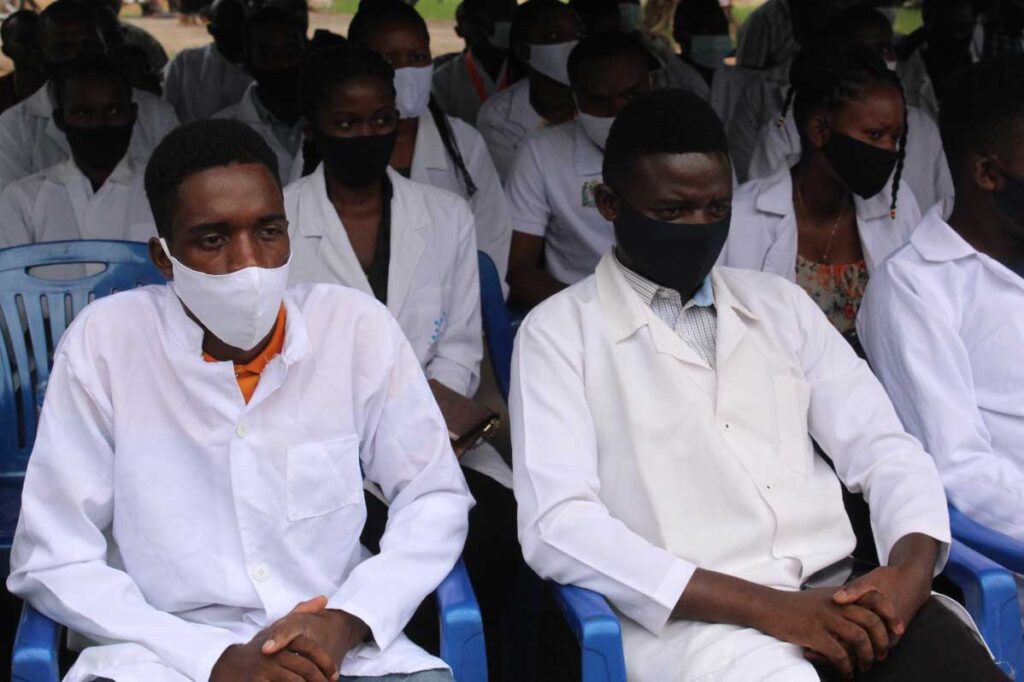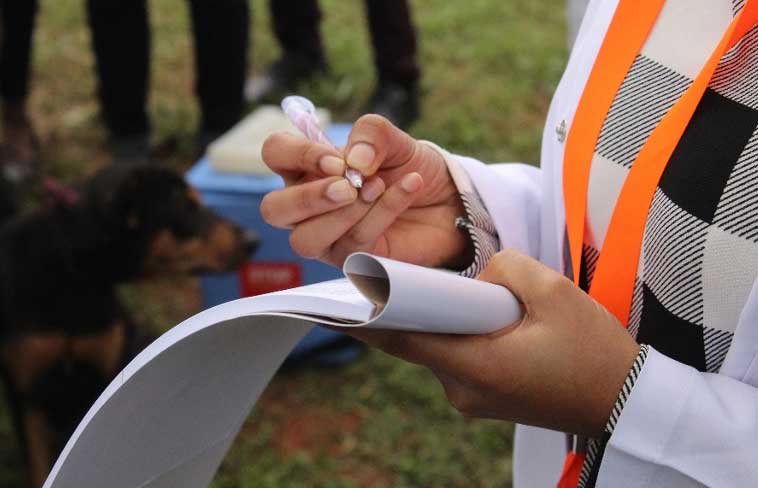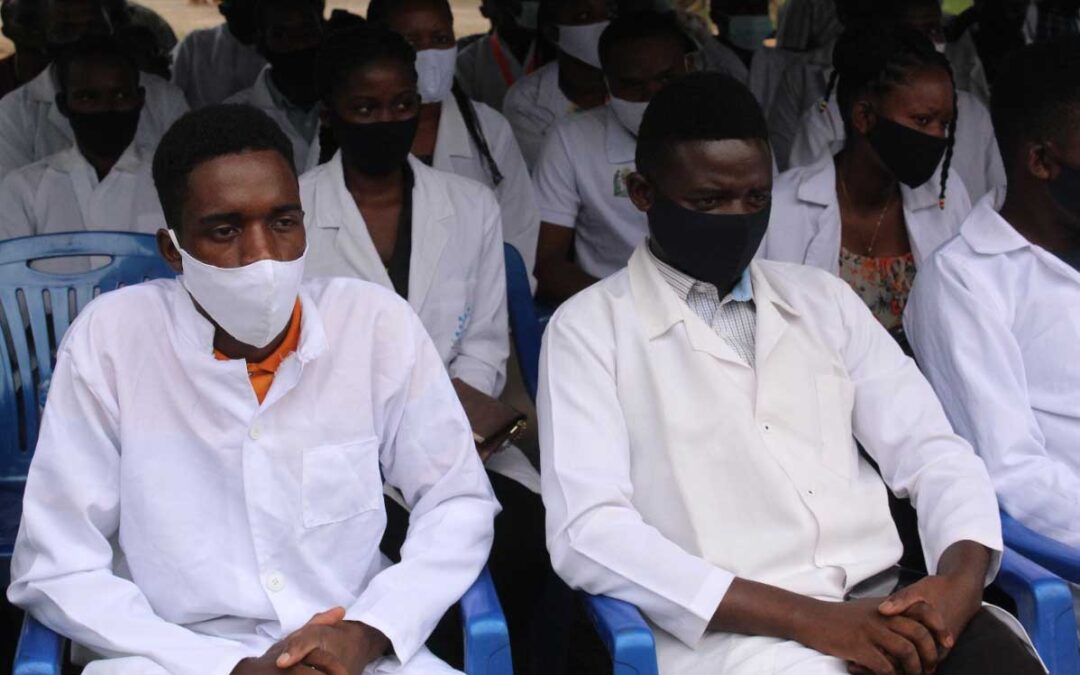By AFROHUN Tanzania Team
“It has been five years since Tanzania prioritized several zoonotic diseases including rabies to be eradicated before 2030 and this campaign today is critical. We cannot wait any longer because people have continuously been bitten by rabid dogs and losing their lives.” This statement was given by the District Commissioner of Kisarawe, Honourable Ms. Joketi Mwegelo, during the launching ceremony of the Mass Dog Vaccination Campaign in the district.

To initiate and operationalize the rabies elimination campaign through funding by the United States Agency for International Development (USAID), AFROHUN Tanzania in collaboration with the Food and Agriculture Organization of the United Nations (FAO), World Health Organization (WHO), Ifakara Health Institute (IHI), Ministry of Livestock and Fisheries (MoLF), Ministry of Health, Community Development, Gender, Elderly and Children (MOHCDGEC), Muhimbili University of Health and Allied Sciences (MUHAS) and Sokoine University of Agriculture (SUA), organized and successfully conducted the mass dog vaccination campaign from 5th to 9th May 2021 in Kisarawe district.
In Tanzania, rabies is endemic causing an estimated 1500 annual deaths. In most cases of human rabies, the virus is transmitted through the bites of rabid animals, which shed the infectious virus in their saliva. It is well-known that animal bite injury records are an accurate indicator of rabies exposure incidence. Rabies has been reported consistently to relevant authorities in the past 5 years with Kisarawe district being among the districts reporting frequent outbreaks of rabies.
In 2014 there were 18,000 dogs in Kilosa District out of which only 600 were vaccinated during that year. This vaccination coverage is less than 4% which means it will never be possible to eliminate rabies unless the coverage is more than 70%.
To achieve this coverage, the World Health Organization (WHO) and World Organization for Animal Health (OIE) advocate a ‘One Health’ approach to rabies control and suggest vaccination coverage of at least 70% of the dog population in a rabies-endemic area to prevent the spread of rabies between dogs and people.
To bring the above fact closer to Tanzania studies show that there are 4.5 million dogs and more than 2 million cats nationwide while Kisarawe District alone has about 4,600 dogs and cats with unknown vaccination coverage to date. Kisarawe district is one of those with highest risk for rabies in Tanzania as its wards and villages are close to the Selous Game Reserve. This is the reason for the campaign taking place in the district.
“The owners of dogs and cats must come forward to vaccinate them in order to protect humans who are the ultimate victims of rabies.” The Director of Livestock Services from the Ministry of Livestock and Fisheries Prof. Hezron Nonga warned the audience during the launching ceremony.
“In a global strategy to eradicate rabies by 2030 vaccination for these animals with a high coverage is mandatory”, Professor Nonga noted. He also said that mass dog vaccination is a proven strategy in preventing rabies in humans; it is less costly compared to treating humans who have been bitten by rabid dogs.
Prof. Nonga said that there is a window of opportunity in the country as the process of rabies vaccines manufacturing in Tanzania will be completed next year. This means the vaccines will be readily available to control rabies. The opportunity will make the vaccines cheaper and government subversion will offset the cost of vaccination especially for those in rural settings who currently cannot afford to take their dogs for vaccination.
Furthermore, AFROHUN Tanzania Country Manager, Prof. Japhet Killewo said, in the campaign, veterinary students from SUA have been trained on dog vaccination and human health students from MUHAS will be involved in registering dogs and owners, educating pet owners on the importance of the vaccine, the symptoms and effects of rabies, providing vaccination information as well as issuing vaccination certificates to dog owners.
“It is expected that the campaign will be carried out every year to work in partnership between medical students from MUHAS and veterinary students from SUA who have great skills in vaccinating all species, educating the community about rabies and how to eradicate it, as well as to play a role in mobilizing the community in protecting Tanzania community against rabies”, Professor Killewo emphasized.
Prof. Killewo added that a lot of groundwork had been done in preparation for this campaign. These include a meeting with stakeholders held in late April 2021 to sensitize them about the importance of using the student learning-and-service model on a yearly basis to conduct these campaigns in the country until rabies is eliminated. The stakeholders included MUHAS and SUA. Which are ready to be releasing their students on a yearly basis for the campaigns. Other stakeholders were the MoLF and the President’s Office Regional Administration and Local Government (PORALG) which are ready to mobilize locally generated resources to support the participation of students in the campaigns.
Prof. Killewo cited two other previous mass dog vaccination campaigns in which AFROHUN, and FAO had been involved, one being in Kilosa One Health demonstration site where more than 2000 were vaccinated and in Moshi district where more than 8000 dogs were vaccinated in 2018 to control a rabies outbreak. Both the campaigns were funded by USAID. The current campaign was conducted for five days, and more than 1,500 dogs and cats were vaccinated. In her campaign launching speech, the district commissioner applauded all those who participated in the campaign and thanked USAID for providing the financial support.



